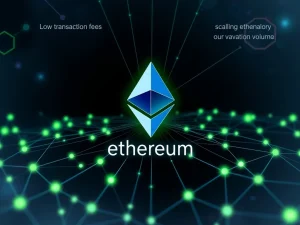Crucial: Vitalik Buterin’s Stance on Safe Rollup Decentralization

For anyone following the evolution of Ethereum, the path to scalability through layer 2 solutions, particularly rollups, is a hot topic. But when is the right time for these platforms to truly embrace decentralization? According to Ethereum co-founder Vitalik Buterin, rushing the process isn’t the answer. Let’s dive into why Vitalik Buterin believes proving security is paramount before achieving full decentralization.
Why Timing Matters for Rollup Decentralization
Vitalik Buterin recently shared his perspective on when rollup-based layer-2 platforms should transition to a decentralized model. His view challenges the notion that decentralization should happen as quickly as possible. Instead, Buterin argues that the timing depends on a critical balance: how low the probability of failure is for the system’s proof mechanisms compared to the risks introduced by centralized components. Essentially, decentralize only when the centralized elements pose a greater threat than the underlying proof system failing.
This discussion arose in response to Daniel Wang, founder and CEO of Loopring, who highlighted the importance of a system’s maturity. Wang noted that not all code is equally robust, even if a rollup reaches a certain ‘stage’. Rollup development is often classified into stages (zero, one, two), with Stage Two being the most decentralized and trustless. However, Wang points out that new code, even in a Stage Two system, hasn’t been tested under real-world stress.
Introducing the ‘BattleTested’ Metric
To address the need for proven resilience, Daniel Wang proposed a new metric: “BattleTested.” This badge would be awarded to rollups that have consistently secured significant assets under pressure from sophisticated attackers. The proposed criteria include:
- Consistently securing at least $100 million in assets for a minimum of six months.
- At least $50 million of those assets being in Ether (ETH) and a major stablecoin.
Crucially, this ‘BattleTested’ status would need to be re-earned after every code update, acknowledging that new code introduces new potential vulnerabilities until proven safe. This metric emphasizes that theoretical security isn’t enough; practical, battle-hardened security is essential.
Layer 2 Security: Beyond Stages
Vitalik Buterin echoed the sentiment that rollup stages aren’t the only factor in security. He stressed that the quality of the underlying proof system is equally important. Dominick John, an analyst at Kronos Research, added that teams need to carefully assess correlated risks like shared custody weaknesses or geopolitical chokepoints when moving from Stage One to Stage Two. These risks can compromise multisig security councils and often become apparent only when the value locked in the system exceeds a certain threshold, like $100 million.
John emphasized that the real signal for decentralization isn’t just a proof system looking good on paper, but when it demonstrates under real economic pressure that it’s more reliable than the potential for coordinated failures among council members. Mike Tiutin, CTO at PureFi, also warned that decentralizing too early can leave users vulnerable.
The Risks of Rushing Decentralization
Decentralization is a goal for blockchain technology, but rushing it carries significant risks. In Stage One, centralized councils can act as emergency brakes if something goes wrong. In Stage Two, with increased reliance on automated proofs and decentralized validators, a single bug could potentially lead to the loss of billions without an easy rollback mechanism. Dominick John described this as putting ideology before safety.
However, the alternative – never decentralizing – also poses significant risks. Arthur Breitman, co-founder of Tezos, pointed out that some prominent Ethereum L2s are “fundamentally custodial,” meaning privileged entities control core logic. This creates a single point of failure and makes the system vulnerable to collusion or compromise among those entities. Relying on their immunity to failure is a fragile position.
Finding the Right Balance for Ethereum Rollups
Vitalik Buterin’s argument centers on finding the optimal moment for decentralization. This moment arrives when the onchain proof system is robust enough that the risks posed by the remaining centralized elements (like upgrade keys or security councils) become the *greater* threat. Until that point, decentralization, which increases reliance on the proof system, might paradoxically decrease overall security if the proofs are not yet fully hardened.
This perspective highlights the complex trade-offs involved in scaling Ethereum. It’s not simply about achieving decentralization but doing so safely and responsibly, ensuring the underlying technology can withstand real-world challenges before removing centralized safeguards. The insights from Buterin, Wang, and other experts underscore that building secure and scalable blockchain systems is a marathon, not a sprint, demanding rigorous testing and proven resilience before full decentralization.









